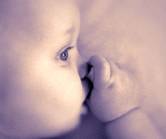
THURSDAY, March 31 (HealthDay News) — The number of births in the United States has declined since reaching an all-time high in 2007, according to a new federal government report.
Data from the U.S. National Center for Health Statistics, part of the Centers for Disease Control and Prevention, show that births fell by 4 percent between 2007 and 2009 — from 4,316,233 to 4,131,019. The researchers noted that a preliminary count of births through June 2010 indicates continuing declines.
The drop in the birth rate was described in the report as “notable, but not truly of historic proportions” compared with the declines in the early 20th century and in the 1960s and early 1970s. However, the report found that births declined among all women younger than 40, among all major racial and ethnic groups, and in most states, although to varying degrees.
“Some researchers have linked the recent fertility decline to the economic recession, but it is not possible with birth data alone to identify the factors shaping the fertility rate decline,” the researchers wrote in their report, released March 31.
The analysis of birth data found that the decline in the U.S. fertility rate — based on births among women in their childbearing years, ages 15 to 44 — between 2007 and 2009 was the largest for any two-year period in more than 30 years. From 2007 to 2009, the rate fell 4 percent, from 69.5 to 66.7 births per 1,000 women.
Birth rates declined for all women younger than 40, but the rate fell 9 percent, to 96.3 births per 1,000 women, among those 20 to 24 years old — the lowest rate ever recorded for this age group, according to the report. The birth rate fell 6 percent among women 25 to 29 years old and 2 percent among women in their 30s.
The birth rate among teens 15 to 19 years old declined 8 percent to 39.1 births per 1,000 women, the lowest rate ever recorded for this age group as well, the report noted.
The only increase in birth rates occurred among women in their 40s, rising 6 percent among women 40 to 44 years old. Births in this age group, however, accounted for just 3 percent of all U.S. births in 2009.
Among racial and ethnic groups, the birth rate decline was greatest among Hispanic women, falling 9 percent, to 93.3 per 1,000 women. The rate fell 3 percent among whites, American Indians and Alaska Natives and 4 percent among blacks, Asians and Pacific Islanders.
The study also found that fertility rates decreased or were unchanged in every state and the District of Columbia, with declines ranging from 1 percent in New York and Oklahoma to 10 percent or more in Arizona and Nevada. The largest declines in fertility rates were in western and southwestern states.
More information
The U.S. Centers for Disease Control and Prevention has more about birth data.

